Can Sugar Gliders Eat Beef or Pork
Sugar gliders are small marsupials that live in Australia and New Guinea. They are also popular exotic pets that are kept around the world. These creatures are known for the thin membrane between their "wrists" and ankles that allows them to jump from heights and glide for up to 100 feet before reaching the round. As tiny, energetic marsupials, we have to ask, what do sugar gliders eat?
Discover the different foods these creatures love to eat while they're in the wild, how they manage to find foods, and the best ways to keep them properly fed as pets.
What Foods Do Sugar Gliders Eat?
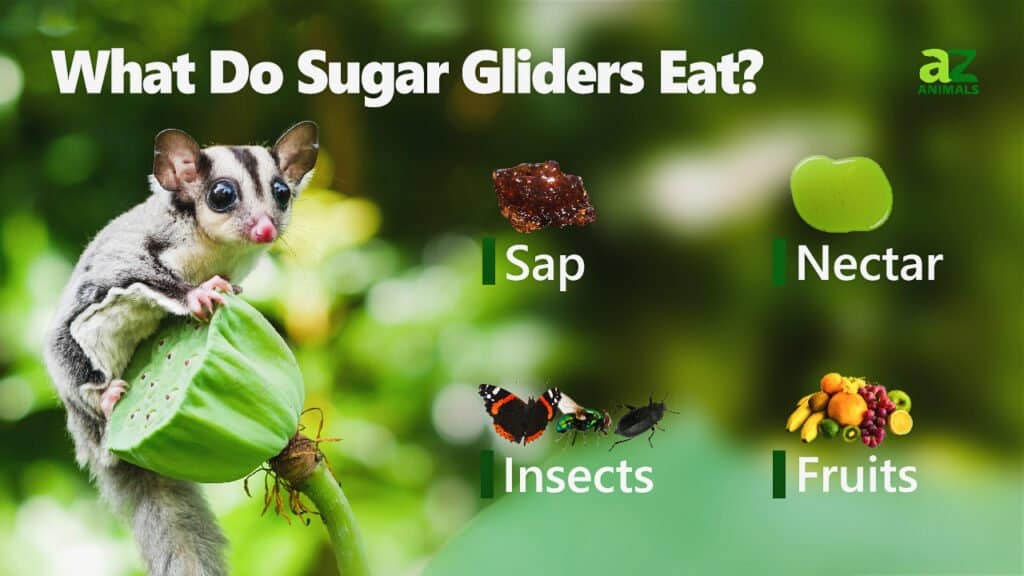
A-Z-Animals.com
Sugar gliders eat insects, tree sap, pollen, fruits, and small reptiles. They are omnivorous marsupials that stick to different diets at various times throughout the year, depending on what's available. Sugar gliders get their name partially for their penchant for eating sweet foods, including the sap and gum of certain trees, and for their gliding abilities.
As pets, their foods must be equally diverse, taking into account their specific dietary needs.
Take a look at some of the common foods that sugar gliders consume:
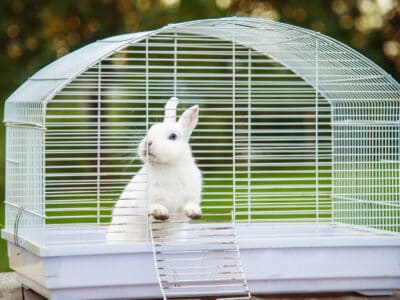
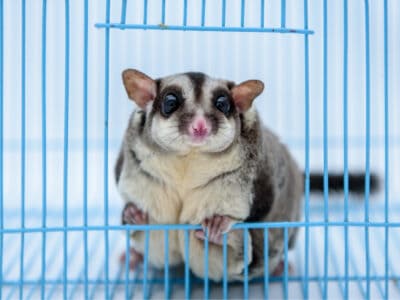
- Acacia gum
- Eucalyptus sap
- Honeydew
- Pollen
- Beetles
- Spiders
- Small birds
- Bird eggs
- Acacia seeds
- Nectar
- Fungi
- Mealworms
- Crickets
- Kiwi
- Moths
- Earthworms
- Cicada
These foods represent the most significant elements of a sugar glider's diet in the wild. They are nutritious and provide the sugar glider with the energy it needs to be continually active.
The only problem with this diet is that sugar gliders are popular exotic pets, and it's tough for people to replicate this diet in captivity.
How Do Sugar Gliders Find Food?
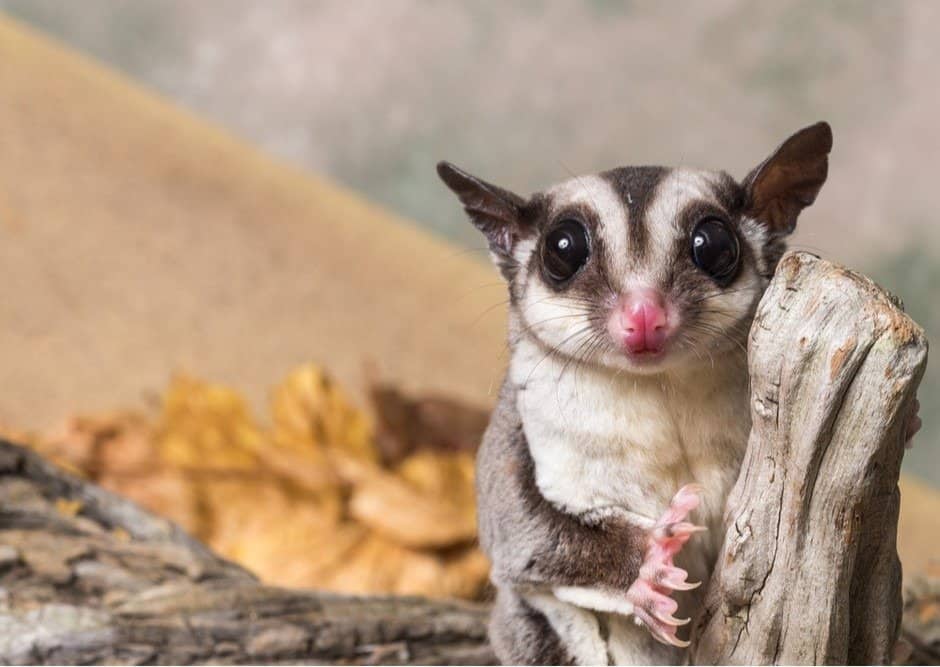
LesPalenik/Shutterstock.com
Sugar gliders are small marsupials, weighing less than half a pound and only about 8 inches in length most as adults. However, their bodies are specialized to help them find food in unique conditions. After all, these creatures are an interesting mix between nocturnal hunters and sap eaters.
The sugar glider's relatively large eyes facilitate great night vision, claws for climbing, and ears that can move independently of one another to pinpoint the location of food and predators alike.
When sugar gliders hunt for prey, they will use their great night vision and hearing to locate insects or even small vertebrates. They'll wait for their prey to stop moving to feed or rest. Then, they will leap and glide to them using their gliding membranes to coast and their tail to help direct them. They ambush the prey and quickly consume them.
Although they are very effective predators in this respect, the truth is that sugar gliders find most of their food by climbing trees to eat the sap, pollen, or gum that accumulates on them. They use their amazing climbing abilities to reach high places on trees and safely consume food, and they can also flee from predators by leaping and gliding to another tree.
In the wild, sugar gliders can eat between 10-15% of their body weight each day to keep up with their high-energy lifestyle.
What Do Pet Sugar Gliders Eat?
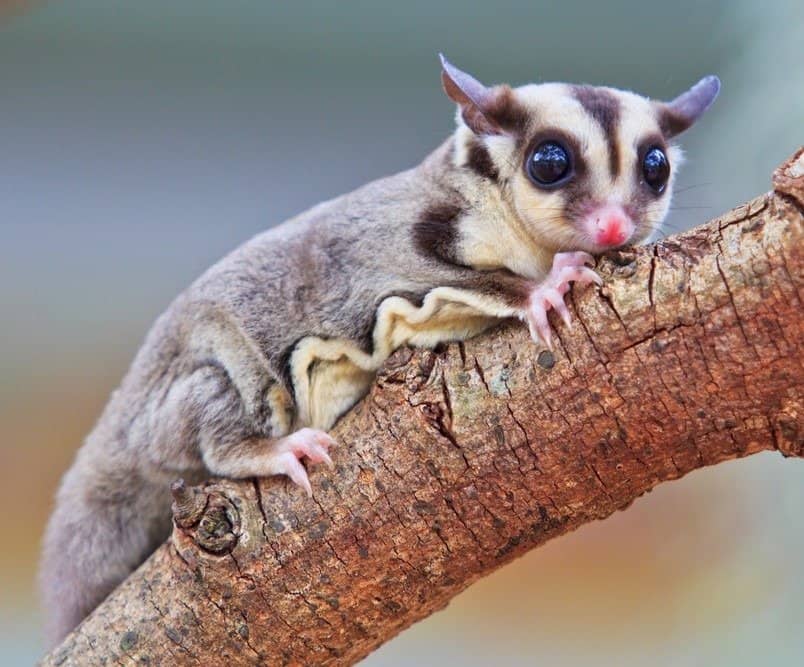
apiguide/Shutterstock.com
Pet sugar gliders eat insects, invertebrates, fruit, meat, commercial foods, and vegetables. Sugar gliders are common exotic pets around the world, but their natural diet is hard to replicate since they have access to a different set of food in their native lands of Australia and New Guinea compared to the United States.
Some of the most common foods that sugar gliders eat in captivity include:
- Specialized commercial foods
- Crickets
- Mealworms
- Waxworms
- Leadbeater's mix (a specialized commercial or homemade meal)
- Grapes
- Food pellets
- Sweet corn
- Apples
- Avocados
- Chicken
- Pork
- Eggs
- Grapefruit
Keep in mind that these creatures do not eat a lot of food. Most of it will be a mix between commercial food, Leadbeater's mix, fruits, and insects. When feeding sugar gliders some insects, it is necessary to "gut-load", or pre-feed, the insects a nutritionally loaded diet before feeding them to the sugar glider.
When caring for these exotic pets, it's necessary to consult experienced owners and specialists to gain insight on the insights to caring for them.
It is also important to note that not all places around the world allow people to keep sugar gliders or have certain rules for keeping them, such as requiring two or more of the marsupials to live together.
Foods to Avoid Feeding Your Sugar Glider
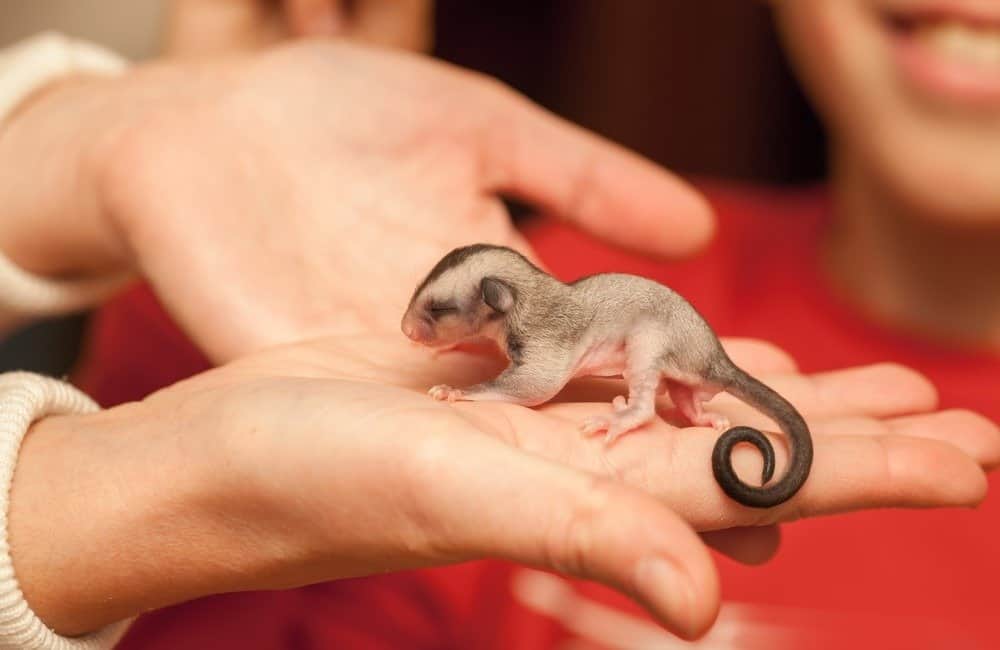
Evannovostro/Shutterstock.com
Although sugar gliders may appear capable of eating just about anything as omnivores, many people lose their pets every year by feeding them the wrong foods. Some foods are outright toxic to them, and others merely cause serious complications.
These are the foods you should avoid feeding your sugar glider:
- Tea
- Chocolate
- Coffee
- Dairy
- Fruits and veggies treated with insecticides
- Carrots
- Raspberries
- Strawberries
These are all foods that can cause health complications or be outright fatal to sugar gliders and should be left out of their diet, but other problematic foods exist. Consult a specialist before feeding your sugar glider anything that raises questions.
What Eats Sugar Gliders?
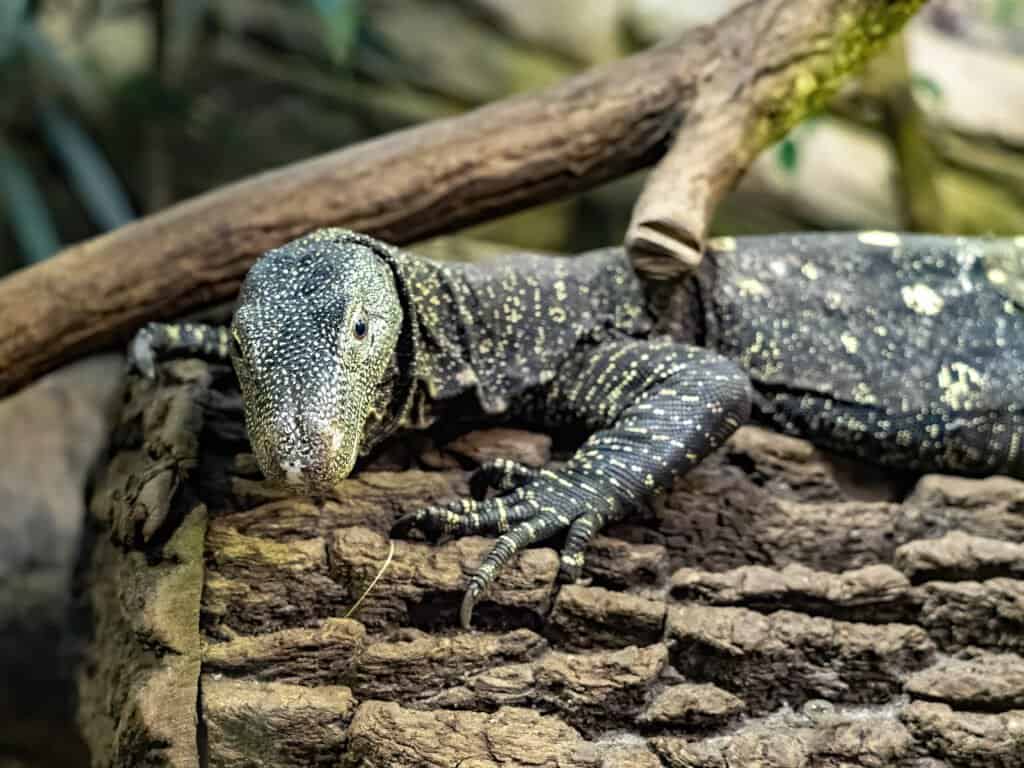
Predators that eat sugars include snakes, monitor lizards, and foxes. Sugar gliders are nocturnal creatures that can see or hear most predators coming their way, and they have the means to escape. Their gliding ability and exceptional climbing skills help them stay off the ground and out of harm's way. However, some creatures can still capture and kill them.
These predators can make a meal of sugar gliders:
- Snakes
- Monitor lizards
- Owls
- Foxes
- Kookaburras
- Goannas
- Quolls
- Antechinuses
- Feral cats
The list of predators for sugar gliders is somewhat small, but keep in mind that these marsupials only live in a very small part of the world. Another primary threat for these creatures comes from humans that cause habitat loss. Wildfires and climate change caused by humans are a major threat to sugar gliders.
Sugar gliders are interesting marsupials that have a unique diet that is hard to replicate in captivity. They require a fair amount of specialized care, so sugar gliders are not the perfect pet for everyone. In the wild, they can be found feasting on tree sap, tree gum, and insects, using their amazing climbing and gliding capabilities to secure a meal.
However, these social creatures are in danger of losing their habitat due to environmental changes. The future could see more of them living in captivity as pets than in the wild!
More from A-Z Animals
Source: https://a-z-animals.com/blog/what-do-sugar-gliders-eat/
0 Response to "Can Sugar Gliders Eat Beef or Pork"
Post a Comment